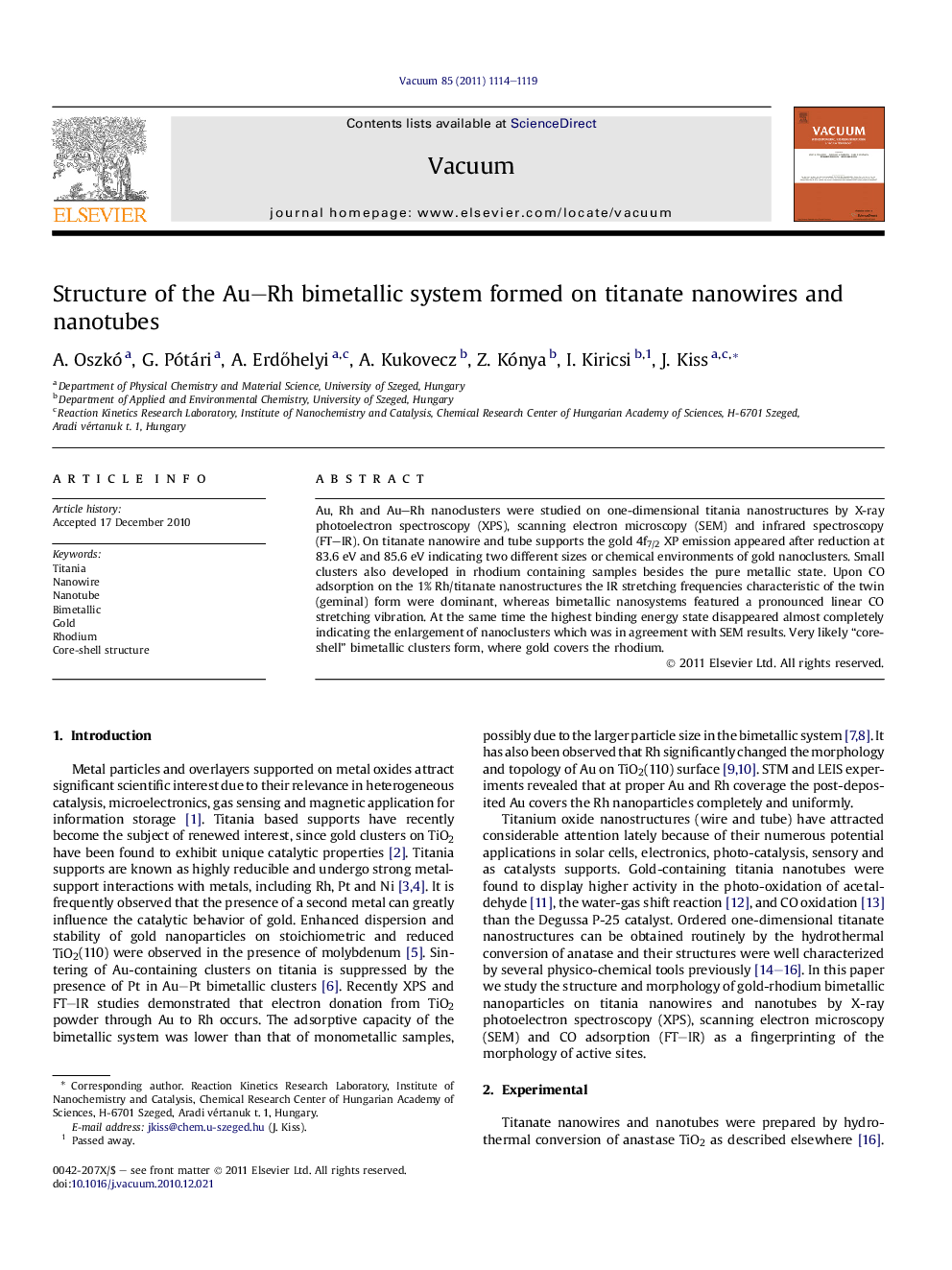| Article ID | Journal | Published Year | Pages | File Type |
|---|---|---|---|---|
| 1688856 | Vacuum | 2011 | 6 Pages |
Au, Rh and Au–Rh nanoclusters were studied on one-dimensional titania nanostructures by X-ray photoelectron spectroscopy (XPS), scanning electron microscopy (SEM) and infrared spectroscopy (FT–IR). On titanate nanowire and tube supports the gold 4f7/2 XP emission appeared after reduction at 83.6 eV and 85.6 eV indicating two different sizes or chemical environments of gold nanoclusters. Small clusters also developed in rhodium containing samples besides the pure metallic state. Upon CO adsorption on the 1% Rh/titanate nanostructures the IR stretching frequencies characteristic of the twin (geminal) form were dominant, whereas bimetallic nanosystems featured a pronounced linear CO stretching vibration. At the same time the highest binding energy state disappeared almost completely indicating the enlargement of nanoclusters which was in agreement with SEM results. Very likely “core-shell” bimetallic clusters form, where gold covers the rhodium.
► Nanowires and nanotubes stabilize the gold in high disperzed state. ► The gold interacts with rhodium on titanate supports. ► Very likely “core-shell” bimetallic clusters form.
